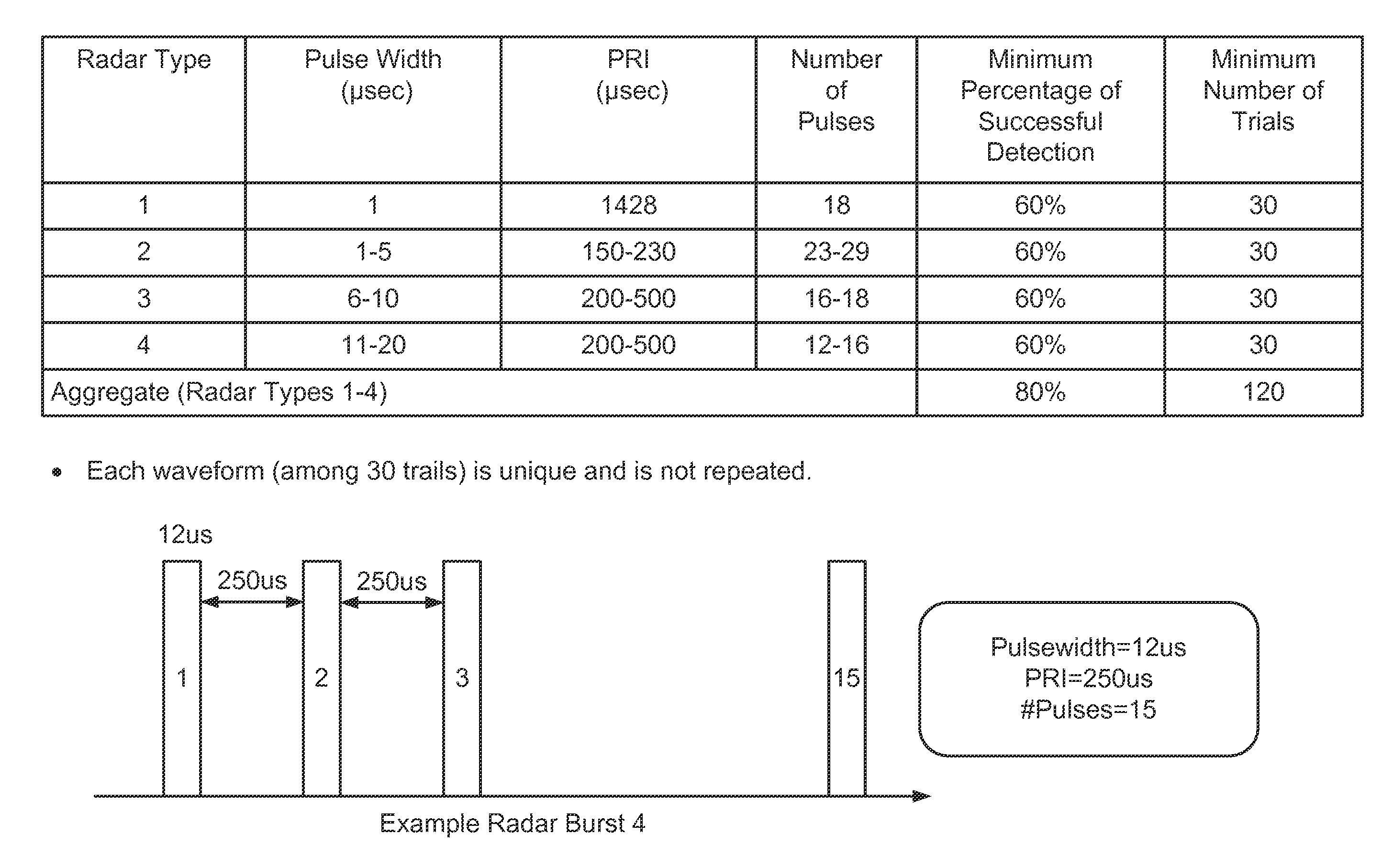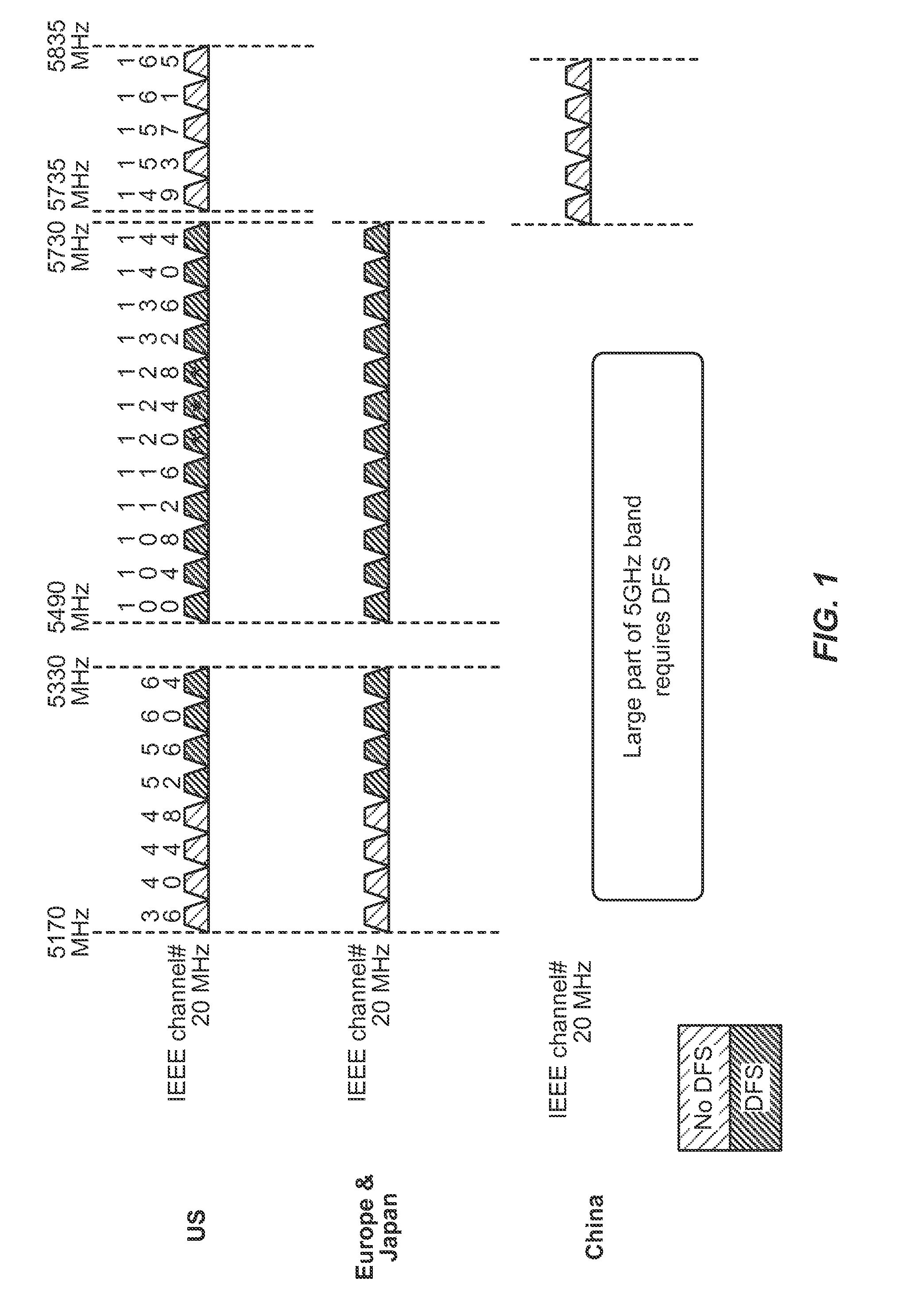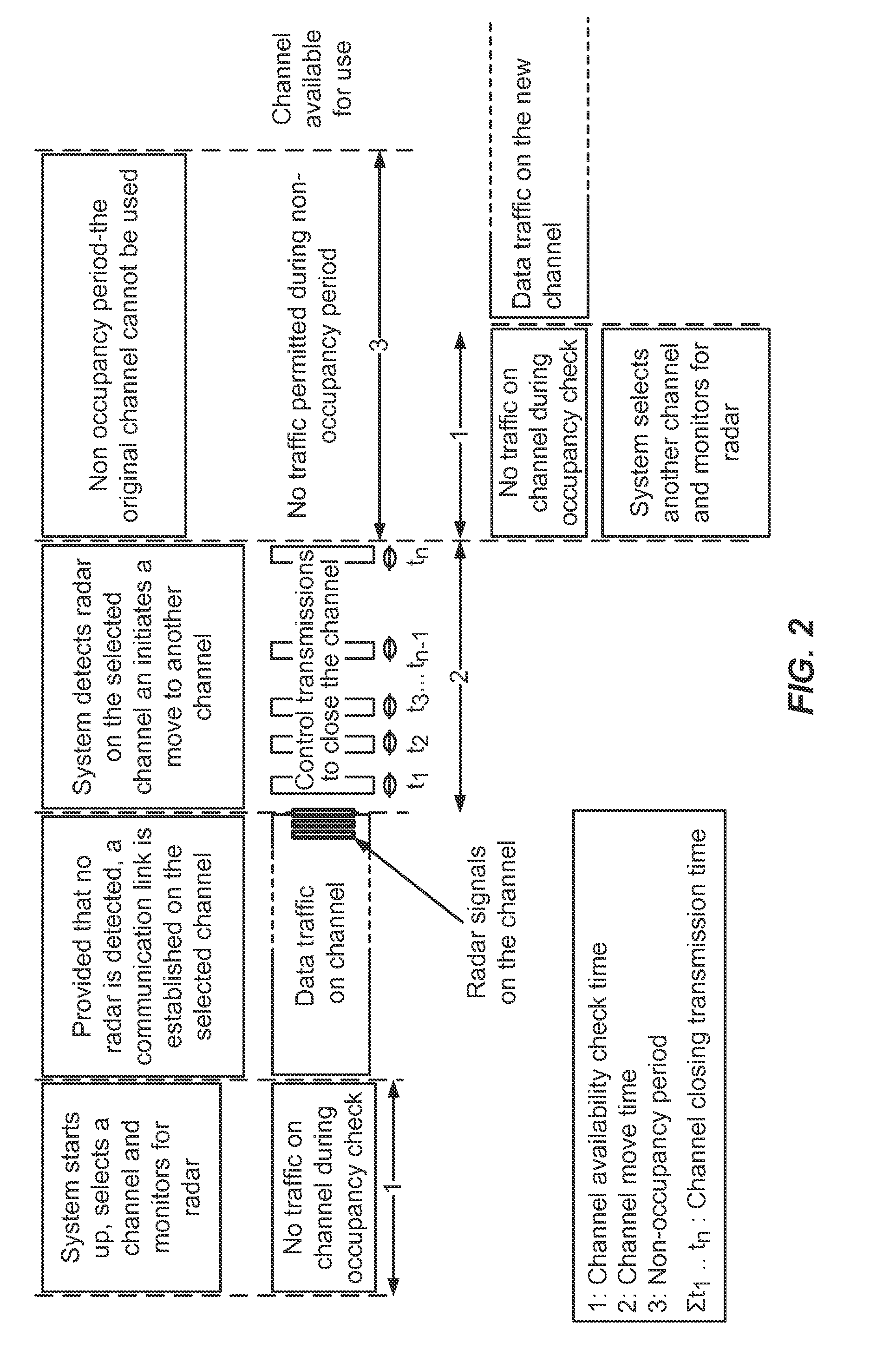Radar detection
a radar and detection technology, applied in the field of telecommunications, can solve problems such as interference between devices in wireless communication networks, and interference with the reception of signals at the second network devi
- Summary
- Abstract
- Description
- Claims
- Application Information
AI Technical Summary
Benefits of technology
Problems solved by technology
Method used
Image
Examples
Embodiment Construction
[0035]The disclosure relates in some aspects to techniques that provide more reliable radar detection. In this regard, a detection algorithm may generally incorporate two phases: 1) a pre-detection phase and 2) a final detection phase.
[0036]In some aspects, the pre-detection phase is a coarse detection phase that is used to trigger a finer final detection phase. Typically, the pre-detection phase makes a decision based on fewer samples (e.g., 10 samples) than the final detection phase. In this way, an initial detection of a radar signal may be made without using significant resources and may be made relatively quickly. Thus, initial detection may be invoked relatively frequently without significantly affecting system performance. However, the initial phase does not detect radar with the same level of accuracy as the final detection phase.
[0037]The final detection phase (e.g., a fine detection phase) is invoked if the pre-detection phase indicates the presence of a potential radar si...
PUM
 Login to View More
Login to View More Abstract
Description
Claims
Application Information
 Login to View More
Login to View More - R&D
- Intellectual Property
- Life Sciences
- Materials
- Tech Scout
- Unparalleled Data Quality
- Higher Quality Content
- 60% Fewer Hallucinations
Browse by: Latest US Patents, China's latest patents, Technical Efficacy Thesaurus, Application Domain, Technology Topic, Popular Technical Reports.
© 2025 PatSnap. All rights reserved.Legal|Privacy policy|Modern Slavery Act Transparency Statement|Sitemap|About US| Contact US: help@patsnap.com



